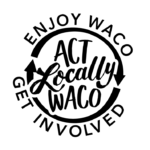By Fiona Bond
Ever since Creative Waco was formed, just over 2 years ago, we have heard from people of all kinds in Waco about their dreams for making Waco a hub for arts and culture. It’s one of the most enjoyable aspects of our work – hearing about seedling ideas that, with the right support, could grow and bear fruit.
But often those questions were accompanied by a question: “How can we know if this could work?”
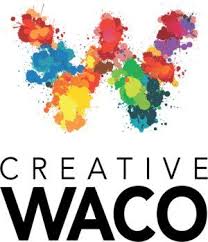 How do we know if Waco is the kind of City that could develop and sustain new art galleries, festivals, theatres, live music venues, artists’ studio spaces, and all the kinds of activity that would really make our city feel like a vibrant, thriving hub of activity that would not only draw residents, but attract visitors, too?
How do we know if Waco is the kind of City that could develop and sustain new art galleries, festivals, theatres, live music venues, artists’ studio spaces, and all the kinds of activity that would really make our city feel like a vibrant, thriving hub of activity that would not only draw residents, but attract visitors, too?
To begin to answer these questions, we turned to that most powerful of storytelling and question-wielding tools – statistics! One of Creative Waco’s first activities was to gather attendance and income/expenditure data throughout the whole of 2016 from Waco’s 29 non-profit arts and cultural venues and programs. This was part of a national survey conducted by Americans for the Arts as part of their “Arts & Economic Prosperity 5” study, which happens across the whole of the USA. This lends considerable kudos to the results and gives the added benefit of allowing us in Waco to compare our findings with peer communities across the nation.
When the results were announced in June, we discovered some fascinating things about Waco. These are stories we want to share as we now work with the Baylor Business School to explore what comes next.
- Waco’s non-profit arts and cultural sector punches above its weight! These organizations and activities (think museums, galleries, live performances, festivals, etc.) deliver $63.7million in economic impact, support 2,184 FTE jobs and contribute $7.4 million in state and local government tax revenue. That’s a whopping twice the economic impact you would expect for a city our size.
- Waco’s non-profit arts and cultural activities bring all kinds of people together! Arts audiences in Waco showed a healthy spread of age, economic and cultural diversity.
- People choose to visit Waco for its arts and cultural activities: Over half of the out-of-town visitors surveyed had come to Waco specifically for the arts event or activity they were attending.
- Waco audiences spend less on “accompanying” experiences such as food
 and drink than they do in comparable cities…an average of $5 less per person, actually. The reason appears to be that many of our cultural activities are taking place in venues that don’t offer food and drink, or are not particularly convenient for restaurants, bars or cafes. The Waco Hippodrome, unsurprisingly, stands out as a major exception to that pattern!
and drink than they do in comparable cities…an average of $5 less per person, actually. The reason appears to be that many of our cultural activities are taking place in venues that don’t offer food and drink, or are not particularly convenient for restaurants, bars or cafes. The Waco Hippodrome, unsurprisingly, stands out as a major exception to that pattern!
You can see the full results of this study at creativewaco.org/aep5 and we’d love to hear your ideas about the exciting opportunities for growth presented by these findings. We are also testing these results through practical experiments, such as the wonderfully successful Waco 52 Pop-Up Gallery on Austin Avenue, which combined visual and performing arts with innovative and memorable food/drink experiences in different formats. That concept proved itself strongly enough through August that it has now become a new downtown business: Cultivate 7Twelve. That’s a fantastic story to tell with the help of statistics – and an even better story to be told over a great meal, accompanied by a glass of something locally produced, and surrounded by art!
 This Act Locally Waco blog post was written by Fiona Bond. Fiona is Executive Director of Creative Waco. She has a background running arts festivals, organizations and cultural projects in her native England and Scotland and is author of “The Arts in Your Church.” In her spare time, she can be found doing an MBA at Baylor, hanging out with husband, Bruce Longenecker, (who teaches religion at Baylor) and their two sons, or playing the bagpipes.
This Act Locally Waco blog post was written by Fiona Bond. Fiona is Executive Director of Creative Waco. She has a background running arts festivals, organizations and cultural projects in her native England and Scotland and is author of “The Arts in Your Church.” In her spare time, she can be found doing an MBA at Baylor, hanging out with husband, Bruce Longenecker, (who teaches religion at Baylor) and their two sons, or playing the bagpipes.
The Act Locally Waco blog publishes posts with a connection to these aspirations for Waco. If you are interested in writing for the Act Locally Waco Blog, please email ashleyt@actlocallywaco.org for more information.
By Madiha Kark
When you think of a typical college student, maybe you think of a life in bliss, time spent moving between classes, parties, and extracurricular activities. That is if the daunting task of getting out of bed has somehow been managed. We imagine carefree boys and girls enjoying their youth, spending money they shouldn’t or don’t have, but the reality is far from it. Of the nearly 18 million undergraduates in the country, a shocking 40 percent work at least 30 hours a week. About 25 percent work full time and go to school full time, and about a quarter of them are single parents.
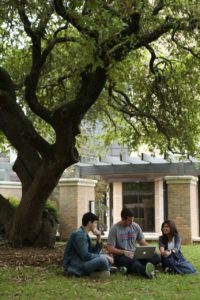 Students at McLennan Community College (MCC) range from high school students who are entering college for the first time to 40-year-olds who are working low-paying physically demanding jobs. They all have a goal of achieving their dreams. They juggle kids, financial stress, typically multiple jobs, and their education. It’s a delicate balance that leaves you physically and mentally exhausted. Community college students deserve your deepest respect, some of them walk a hard path of constant struggle and have to put their dreams on the back burner because of finances or other responsibilities. Many of them continue out of sheer will and belief in the hope for a better future. Here are my four reasons you should choose MCC:
Students at McLennan Community College (MCC) range from high school students who are entering college for the first time to 40-year-olds who are working low-paying physically demanding jobs. They all have a goal of achieving their dreams. They juggle kids, financial stress, typically multiple jobs, and their education. It’s a delicate balance that leaves you physically and mentally exhausted. Community college students deserve your deepest respect, some of them walk a hard path of constant struggle and have to put their dreams on the back burner because of finances or other responsibilities. Many of them continue out of sheer will and belief in the hope for a better future. Here are my four reasons you should choose MCC:
- Affordability:Paying for college is an expensive undertaking. Annual tuition and fees at four-year institutions in Texas can reach upwards of $40,000. MCC offers a great education at an affordable price. The average cost of a two-year degree at MCC is around $12,000.
- Academic Flexibility:MCC is a good option for easing your way into higher education. Not everyone has a clear plan of what they want to study. At MCC, students can start with some core classes and have options to transfer to other programs. MCC partners with various four-year universities that offer classes on campus for bachelors, masters and Ph.D. degrees with easy transfer options.
- Class Size and Personalized Attention: Many community colleges offer smaller class sizes than traditional four-year colleges. That means, students get personal attention and one-on-one time with instructors. At MCC, our student-to-teacher ratio is typically 17:1. According to one reviewer, “Class sizes remind me of that in high school because they are big enough to have a great discussion but small enough to know the names of your classmates.” Additionally, a lot of MCC professors teach at other four-year universities and are experts in their fields.
- S
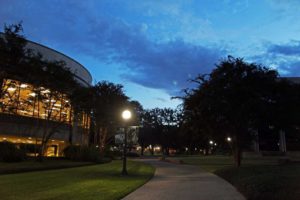 tudent Support Services: A recent Urban Institute study found that from 2011 to 2015, one in five students attending a two-year college lived in a food-insecure household. A lab found that in 2016, 14 percent of community college students had been homeless at some point. These students work extremely hard to make ends meet and simultaneously get the education they need to become more stable. Some of the support services offered at MCC include, the food pantry, academic and personal counseling, single-parent initiatives, career services, and Success Coaches.
tudent Support Services: A recent Urban Institute study found that from 2011 to 2015, one in five students attending a two-year college lived in a food-insecure household. A lab found that in 2016, 14 percent of community college students had been homeless at some point. These students work extremely hard to make ends meet and simultaneously get the education they need to become more stable. Some of the support services offered at MCC include, the food pantry, academic and personal counseling, single-parent initiatives, career services, and Success Coaches.
If you need any more reason to attend a community college, know that these famous people all started at a community college:
- Steve Jobs
- Walt Disney
- Halle Berry
- George Lucas
Registration for Spring 2018 runs Nov. 6-Jan. 13.
 Madiha Kark is a Marketing, Communications and Photography Specialist at McLennan Community College. She holds an M.A. in Journalism from the University of North Texas. She loves to travel, cook, and read nonfiction books.
Madiha Kark is a Marketing, Communications and Photography Specialist at McLennan Community College. She holds an M.A. in Journalism from the University of North Texas. She loves to travel, cook, and read nonfiction books.
The Act Locally Waco blog publishes posts with a connection to these aspirations for Waco. If you are interested in writing for the Act Locally Waco Blog, please email ashleyt@actlocallywaco.org for more information.
By Vivian Rutherford
As a child, I was very close to my maternal grandmother. Spending many hours with her are some of my fondest memories. She told me stories about her family, her mom, and the grandmother that raised her.
My great-great grandmother had been a slave and most of her children had been sold into slavery except for one child, my future great- grandmother, who had been born during Emancipation.
Those stories along with ones of her childhood, adult and married life instilled in me a sense of pride in who I was and what I could become. She believed in me.
Annie Lee would live to be almost a hundred years old. Even though she could not read or write, education was her top priority for me. I would sit at her feet for hours listening to story after story.
Eventually I began to ask for her specific tales. I shared those stories with other family members. And as I expanded my reading appetite, I included folk tales and fairy tales. Throughout my school years, opportunities would arise, whether they were plays, speech competitions, church productions in which I was able to grow my expertise.
Becoming a children’s librarian was the perfect direction for me. I was able to share old and new favorite stories each week with our youngest patrons and their families.
As a storyteller, I enjoy the almost tangible connection with the audience. I can actually feel them being drawn in. It is an amazing feeling, one that I both cherish and revere.
After being in Waco for several years, I attended the Tejas Storytelling Festival, an annual storytelling event in Denton, Texas. The festival was an eye opener. Not only were there workshops designed to improve and polish storytelling skills, but the organization itself was an umbrella for local guilds scattered throughout Texas, Oklahoma and Louisiana. They catered to individual tellers and groups. The guilds then supported the local tellers who either were professional, wanted to become professional or were just interested in listening to tellers. Being in a guild provided the storytellers a protective environment in which to share and practice their stories.
In 2007, Terri Jo Mosely (who was a Waco Tribune reporter at the time) was attending the festival when we bumped into each other. I was very impressed with the Tejas Storytelling Association and wondered out loud how nice it would be if we had a guild in Waco. Terri Jo immediately asked me, “Why wonder?” “Why don’t you do it?” And I thought, why not?
There was a nearby guild, the Bluebonnet Scots of Mexia, which along with Tejas, mentored and guided us. We were off to a great start. We began with a few members: Leslie Collier (deceased), Julia Bugh, Terri Jo Mosely, Beulah Barksdale, Barbara Bridgewater, Marian Fleischmann, Tom Taylor and myself.
During that first year, we hosted our very first Tellabration! Tellabration is a world-wide national event celebrating storytelling and Waco was a part of it!
The next event added was “Walking Tales” at Oakwood Cemetery. We wanted to combine history with storytelling. Highlighting lives that influenced and helped to build Texas was the ideal option.
In 2016, the Guild was given the green light to facilitate and host for the first time a Tejas Summer Conference in Waco. This Bi-annual conference teaches the storytelling nuts and bolts. The conference included attendees from as far away as New York.
We’ve been able to participate, especially with our youth, in various activities such as Art on Elm Street, Barnes and Noble Storytime, the Cultural Arts Fest, various nursing homes and of course Tellabration!
Ultimately, I would love to see an annual storytelling festival right here in Waco. Storytelling as a community brings families together, strengthens our identity, brings out character, celebrates our diversity and unites us in our commonalities. We are stronger for weaving our stories together.
Teaching the art of storytelling to young people, adults and students is a fun way to preserve and share the art. And, it forever keeps me in the learning mode.
A celebrated moment in my storytelling journey occurred this past Easter, 2016. Several churches came together to create a momentous storytelling event. For several weeks at the Hippodrome, a variety of tellers from diverse backgrounds shared stories and experiences with the Waco community. I was honored to be included. It was a total life changing experience for me!
I see the Heart of Texas Storytelling Guild as a virtual front porch. In days gone by, people would see someone sitting and rocking on the porch. They would sit a spell and talk. Others would stop and join them and before you knew it, the stories would flow.
That’s what we do every 4th Saturday of the month (holiday exceptions).
We let the stories flow. Some are sharing just for the sheer joy of telling, knowing someone is listening with awe. Some are sharing with an agenda, needing specific critiques. Some are there as beginners, gleaning from the many years of experience. Some are there to take it all in and loving every minute. We would love to have you come, sit a spell, tell your story!
Tellabration! 2017
- November 11 @ 6:00 pm – 8:30 pm
- Austin Avenue United Methodist Church (Fellowship Hall), 1300 Austin Avenue
- Tickets: $12/12yrs-adults, $6/4yrs-11yrs
Tellabration! celebrates the ageless art of storytelling. This local event, sponsored by The Heart of Texas Storytelling Guild and celebrated world-wide, is our way of sharing this traditional art within our community. Come enjoy a feast of stories coupled with a fine meal. This year we celebrate Kyndall Rae Rothaus, storyteller, poet and preacher. She is the pastor of Lake Shore Baptist Church in Waco, and the author of Preacher Breath (Smyth and Helwys, 2015).
For more information: Vivian Rutherford, 254-717-1763, vivian.rutherford@thestorylady.org
www.hotstorytellingguild.org
Heart of Texas Storytelling Guild
What: An Organization of Storytellers and Supporters dedicated to preserving the Art of Storytelling
When: We meet the 4th Saturday of each month (Holiday exceptions)
Adults: 10:30-12 noon Youth: 1:30-3pm
Where: Waco-McLennan County Library, South Branch, 23 S. 18th St. (at dead end of 18th) Waco, TX
Call or email for more information: Vivian Rutherford (254) 717-1763, vivian.rutherford@thestorylady.org www.hotstorytellingguild.org
 Vivian Rutherford is originally from Houston, Texas. She moved to Waco in 2000 and joined the Waco-McLennan County Library System as a Children’s Librarian. She began The Heart of Texas Storytelling Guild in 2007. She enjoys reading, cooking, listening to music and playing the piano. She is a wife, and mother to 3 kids, 3 cats and 1 dog.
Vivian Rutherford is originally from Houston, Texas. She moved to Waco in 2000 and joined the Waco-McLennan County Library System as a Children’s Librarian. She began The Heart of Texas Storytelling Guild in 2007. She enjoys reading, cooking, listening to music and playing the piano. She is a wife, and mother to 3 kids, 3 cats and 1 dog.
The Act Locally Waco blog publishes posts with a connection to these aspirations for Waco. If you are interested in writing for the Act Locally Waco Blog, please email ashleyt@actlocallywaco.org for more information.
By Christina Helmick
Henry Ford once said “Coming together is a beginning; keeping together is progress; working together is success.” Personally, I think that quote described the atmosphere during the 2017 Prosper Waco Annual Summit. On October 12, hundreds of community members gathered at the Waco Convention Center to celebrate the work our community has begun by working together.
The evening’s program focused on where we’ve been, where we are and where we are going. The night kicked off with opening remarks by Dr. Marcus Nelson, the superintendent for Waco ISD. There was such excitement in the room between those who were hearing him speak for the first time and those who knew how his words capture an audience. Following Dr. Nelson, our director of community engagement, Liz Ligawa, and a panel of grassroots community leaders took the stage to talk about why showing up and sharing your perspective is important to community change.
Next, Matthew Polk highlighted initiative efforts led by community partners that are currently being implemented such as Project Link, System of Care and the Community Loan Center. Then, a panel of seven community leaders took the stage to answer questions about efforts addressing education, health and financial security outcomes. Panelists answered questions about what data the organizations involved are tracking and how community members can get involved. With the event coming to a close, three speakers detailed efforts with big plans for 2018.
At the end of the night, one of our goals was to ensure all people at the Summit understood there are ways to get involved starting that night. Each person can make a commitment to get involved by working together to improving overall quality of life in Waco. So, we asked people to complete a commitment card. The card highlighted the different opportunities people can take to become involved. We listed a few of the ways to become involved like mentoring and joining work happening at the neighborhood-level. Forty-four people committed to being involved and working together to achieve the community’s goals. Of the 44 people who made their commitment at the Summit:
- 17 identified that they would like to be a mentor
- 4 committed to recruiting mentors
- 9 committed to hosting internships at his/her organization or company
- 4 committed to identifying internship opportunities at local businesses
- 17 want to attend a Prosper Waco 101 event
- 18 want to join a Strong Neighborhood Team
- 29 want to learn more about ways to get involved in the Prosper Waco initiative
If you weren’t able to attend the Summit or didn’t get to fill out a card, make your commitment by clicking here! Collectively, we can make our own contributions to achieving the goals our community has set. If you have any questions about the opportunities to get involved, reach out to Jillian Jones in our office (jillian@prosperwaco.org) or call 254-741-0081.
To download the feedback from participants, click here. If you missed the Summit and would like to watch the entire evening, you can click here.
Henry Ford was right—it’s by working together that we, as a community, will see success.
 Christina Helmick is the director of communication at Prosper Waco. She is a recent graduate of Baylor University with a BA in Journalism, Public Relations & New Media. Originally she is from Washington, D.C., but has stayed in Waco post-graduation. She is an active mentor at J.H. Hines Elementary School, enjoys spending time with her family and watching Baylor football. Sic ’em Bears!
Christina Helmick is the director of communication at Prosper Waco. She is a recent graduate of Baylor University with a BA in Journalism, Public Relations & New Media. Originally she is from Washington, D.C., but has stayed in Waco post-graduation. She is an active mentor at J.H. Hines Elementary School, enjoys spending time with her family and watching Baylor football. Sic ’em Bears!
The Act Locally Waco blog publishes posts with a connection to these aspirations for Waco. If you are interested in writing for the Act Locally Waco Blog, please email ashleyt@actlocallywaco.org for more information.
(Last year the Central Texas Artist Collective (CTAC) organized an exhibit downtown called EKPHRASIS. It was an exhibit of art and words. Local poets and artists were paired up to create art and poetry together that was then placed on exhibit in downtown Waco.
This year the EKPHRASIS theme is An Exploration of Mind, Body, Soul. It takes a deeper look at mental health and illness, grief and loss, trauma, recovery, and healing. The hope for this mental health exhibition is to encourage dialogue stimulated by the 19 Artists and Writer’s ekphrastic displays, to destigmatize misconceptions, and to cultivate an empathic understanding of one another.
In today’s blog post, our blogger, Becky Charles shares her thoughts as a visual artist participating in EKPHRASIS. – ALW)
By Becky Charles
Last year wandering around downtown Waco I came across the EKPHRASIS exhibit by chance.
I was just taking a walk after dinner and saw all the beautiful art and poetry that was created by our community and I was in awe. I never imagined I would participate in this type of event.
This spring a friend asked for people to sign up for EKPHRASIS as a birthday gift to her. I thought it was a wonderful birthday wish and I signed up!
I know Jamie Graham through my friendship with her daughter who I met over 25 years ago. She found out I was participating she suggested we collaborate. EEEEE!! I was so excited to create something with her because she is such a creative and amazing person, but I had zero ideas on WHAT to create. My mind was blank.
I might have panicked a little and had a “what was I thinking signing up for this?!?!” moment. I’ve never created art for public viewing nor collaborated with another artist in this way. I’m more of a background volunteer type of person who helps set up, clean up, anything needed to help an event run smoothly. I make art all the time at home to keep or give away as gifts but don’t consider myself an “artist;” it’s just for fun.
Jamie and I met for lunch and there I sat with a brain full of empty. Jamie said she could write a poem inspired by my artwork or I could create art inspired by one of her poems. Since my mind was literally a blank canvas at that point I asked if she could write first and I would create whatever her writing inspired me to. She had a piece she was working on and prefaced it with a very personal story.
I’ve known Jamie most of my life as my friend’s mom, someone to look up to, a mentor, an influence on my development from a teenager to a grown woman, a mother to not only her daughter but to all of us who spent time in her house growing up. She began reading her poem and in that moment I saw her on even ground. At this point in life we are both mothers. In her story of life struggles and her poetry, I saw parts of myself…a woman/mother/person who just wants a moment of peace so she hides in a bathroom behind a locked door. How doors can become barriers or we can open them to freedom. How comforting it can be to isolate yourself at times but then how quickly that isolation can feel like you’re trapped. That we hold the key to the doors we create for ourselves. As Jamie read her poem to me in that restaurant, I saw the art come to life. I was moved to tears by her words and what I envisioned for the art to go with them.
Our creation is simply titled “Doors.” I saw parts of myself in her poem and if you look closely, you will see part of yourself in the art inspired by her words.
 Becky Charles is a Waco native who works for a local mental health clinic. She enjoys spending time with her family, volunteering together for community events, and supporting local businesses, artists, and musicians. She creates many forms of art in her spare time for family and friends but this is her first time to have art on public display.
Becky Charles is a Waco native who works for a local mental health clinic. She enjoys spending time with her family, volunteering together for community events, and supporting local businesses, artists, and musicians. She creates many forms of art in her spare time for family and friends but this is her first time to have art on public display.
In preparing for the Waco Walks “Slightly Spooky Halloween Walk” that will take place tonight, I took a closer look at the Starry Night mural on 10th street between Columbus and Washington. I wondered who came up with the idea and who created the beautiful mural. I had enjoyed the murals on Elm Avenue, but this was one of the first ones I remember seeing on the “Downtown” side of the river. A little Facebook sleuthing resulted in an answer. It was a project of one of Jenny Dougherty’s (now Jamison’s) art classes at Live Oak Classical School. The building is owned by Thad & Loryn Hairston and their son Cullen Hairston was in Ms. Dougherty’s class in 2011. I wrote to Jenny and she wrote me back. I enjoyed her explanation so much, I thought I would share it with you all as a Halloween treat! – Ashley Bean Thornton
 By Jenny Dougherty Jamison
By Jenny Dougherty Jamison
Gosh, I loved that project.
This was before Waco was “cool” (though it’s always been cool to me). Before Fixer Upper etc. etc. I had a dream of making downtown Waco more beautiful.
My 5th grade students study Van Gogh – It’s a pretty powerful subject, conversations about mental illness, the value of art, etc. I looked for a wall all Summer leading up to that school year. Called countless business owners. Finally a parent at Live Oak said he owned a building on 10th. So we went for it.
I had loved Starry Night since I was a kid – I painted it on the bathroom walls of my childhood home. It also lends itself to be painted by middle schoolers and is striking from a distance.
Sherwin WIlliams generously donated the paints. It was much more of an endeavor than I realized. Painting a mural is a bigger project than I’d done before. Not to mention supervising middle schoolers in the wild :).
They did a fantastic job – I’m tearing up writing this. They really did shine in their painting and responsibility around the whole project. My then boyfriend (now husband) and I painted the top third, as we were the only ones who could reach it. John and Kate Sterchi also helped quite a bit and had classes help.
I love seeing this mural pop up in the backgrounds of people’s engagement photos and touristy Waco things. I hope you guys enjoy your walk!
This project serves as a reminder to me that …
- There are really good people in Waco who want to help you succeed in your endeavors.
- Middle Schoolers are far more capable then we give them credit for.
- Even lawyers (my husband) can be taught to paint.
 Jenny (Dougherty) Jamison was an Art Teacher at Live Oak Classical School from 2006-2012. She now lives in Austin with her husband Ryan and son Callaghan. She enjoys painting portraits, making bread and growing vegetables. Most days you can find her and Cal hiking the green belt or in the kitchen. Waco (and Live Oak) will always have a piece of her heart.
Jenny (Dougherty) Jamison was an Art Teacher at Live Oak Classical School from 2006-2012. She now lives in Austin with her husband Ryan and son Callaghan. She enjoys painting portraits, making bread and growing vegetables. Most days you can find her and Cal hiking the green belt or in the kitchen. Waco (and Live Oak) will always have a piece of her heart.
(Ira Watkins is an artist from Waco. In 2005, he painted a mural of Dr. Martin Luther King Jr. on the old pier that used to support the Interurban Railroad bridge. Now the old pier with its beautiful mural. serves as an observation deck overlooking the Brazos near the East end of the Suspension Bridge. Mr. Watkins lives in San Francisco, but has family in Waco and still visits frequently. Sarah Frank interviewed him by telephone from his home in California. – ALW)
By Sarah Frank
A few weeks ago I took some time out of my lunch break to visit the Suspension Bridge and take a walk through the park. I stopped for a moment to admire one of my favorite Waco murals, that of Martin Luther King delivering his famous “I Have a Dream” speech to thousands.
As the daughter of a black man I was raised to know African American history. I know all the names by heart, from Rosa Parks and Sojourner Truth, to Emmett Till and Jesse Washington. When I told my dad I was going to school in Waco, I remember him asking “Do you know what happened there?” At the time, I had never put it together that the Waco in which the lynching of Washington occurred was the same Waco I was moving to. I spent the rest of the night searching for other lynchings and racist acts in the Waco area, questioning my own judgement to move there. I had passed through Klan country before and in my terrified state I imagined Waco would be the same.
Four years later, I’m still here and I love Waco more now than ever.
Acts of love and peace like the painting of the MLK mural give me and the rest of the community a sense of hope, which was exactly the intention behind artist Ira Watkin’s painting. A few days after my visit to the mural I had the privilege of interviewing Mr. Watkins about growing up in Waco and the purpose behind the mural. This was the first time I had spoken to an African American native of Waco about the history here, and I was eager to gain a new perspective on my current home and its past.
“I have more flowers in my yard than they do at MLK park”
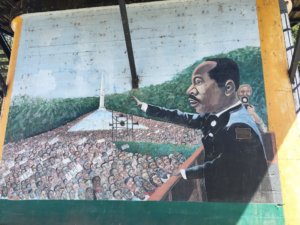 The idea of the mural was originally spawned as a beautification project. Mr. Watkins explained that he had a friend over at his house one day and they were looking through an Ebony magazine. His friend mentioned the lack of beauty in the Martin Luther King Jr. Park and said, “I have more flowers in my yard than they do at the MLK park.” He went on to ask Watkins to paint a mural for the park. Watkins agreed and chose to paint a mural of the images of King that were displayed in an Ebony magazine. Watkins went on to talk about King, mentioning, “To me, it’s like MLK was an inspiration. Sometimes God puts different people on the planet not just to give a message from a religious perspective, but from a humanitarian perspective.”
The idea of the mural was originally spawned as a beautification project. Mr. Watkins explained that he had a friend over at his house one day and they were looking through an Ebony magazine. His friend mentioned the lack of beauty in the Martin Luther King Jr. Park and said, “I have more flowers in my yard than they do at the MLK park.” He went on to ask Watkins to paint a mural for the park. Watkins agreed and chose to paint a mural of the images of King that were displayed in an Ebony magazine. Watkins went on to talk about King, mentioning, “To me, it’s like MLK was an inspiration. Sometimes God puts different people on the planet not just to give a message from a religious perspective, but from a humanitarian perspective.”
“You see these freckles? That’s the n*gger in me.”
After discussing the conception of the mural, I moved on to ask Watkins more about growing up as an African American in Waco and in the United States. He told stories of his old stomping grounds, of what he did for money, and who his friends were. Despite having what seems to me as a relatively normal childhood, Watkins told me a short story which stuck with me:
“When I was there in Waco as a kid, there was one white dude named Ralph that we socialized with and we could go up to his house as long as his parents weren’t there. He had freckles, he always said, “You see these freckles? That’s the n*gger in me.”
Watkin’s story surprised me for two reasons: the fact that he could only go to Ralph’s if his parents weren’t home and Ralph’s comment about his freckles. This story is a product of its time, steeped in prejudice but also in progress. Ralph’s parents illustrate the prejudice at the time – an unwillingness to have a black boy over at their house. Ralph, however, portrays the progress – a boy so accepting that he is okay with having a little bit of black in him.
Despite the racism and prejudice Watkins may have endured growing up, he explains that “[Waco] was great to me because, in my opinion, we had everything that white people had… Everything was basically on the same level.”
“They’d never come back to Waco. They haven’t seen the changes.”
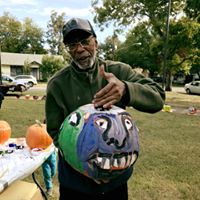
Ira Watkins painting pumpkins with kids in East Waco Park (October 2017)
Speaking with an African American man who grew up in a time of great racial divide, I expected Watkins to be more bitter toward his hometown and his childhood; however, Watkins only had positive things to say about the city. “Waco was alright to me,” he explained. “I have some friends that said they’d never come back to Waco. They haven’t seen the changes. The good thing about it is everyone there is not from there or the surrounding area. They have people there from all over the country, all over the world, and when they come in they come with different ideas. Some of them fall in place with the old guards and some of them bring their own interpretations of what they want it to be.”
“You can’t undo what has been done.”
When asked about Waco’s past, Watkin’s message remained one of hope and progress. Despite the history of racism and prejudice here, Watkins asserts that there has been, and will be, progress in this city. “It’s history, but you can make progress from learning from the past,” explained Watkins when asked about the acts of violence in Waco. He goes on later to attest, “My perspective is that you can’t undo what has been done. You have to live with the past and make strives so that the future can be better.”
My interview with Watkins highlighted the progress Waco has made and motivated me to continue working toward an even better future. His story has also made me realize that Waco is not just its history, but it is its stories, its people, and most importantly its progress.
 Sarah comes from Abilene, Texas and is a senior at Baylor University. She studies Psychology and Professional Writing and hopes to pursue a career in clinical research. She is a dog lover and is known to pull over in her car to stop and pet a dog. She has a hunger for travel and has visited 8 countries and hopes to go to more. A pessimist by nature, but with hope for a better future, she is passionate about civil rights and dreams of a future without borders, hunger, and war.
Sarah comes from Abilene, Texas and is a senior at Baylor University. She studies Psychology and Professional Writing and hopes to pursue a career in clinical research. She is a dog lover and is known to pull over in her car to stop and pet a dog. She has a hunger for travel and has visited 8 countries and hopes to go to more. A pessimist by nature, but with hope for a better future, she is passionate about civil rights and dreams of a future without borders, hunger, and war.
By Sheila Whitehead
Try something for me – Google the phrase “parent engagement in school.” What did you find? When I run that search, I find 3.8 million returns addressing or at least mentioning the importance of parent engagement in our schools. 3.8 million returns are ranging from scholarly articles about why it’s important to how schools can encourage parent engagement. Everybody seems to be talking about it – everyone can see the importance of parent engagement. Research over the past 50 years has shown that when parents are involved in their child’s education, school attendance increases; students have higher grades and score higher on tests; and they are more likely to graduate and go on to postsecondary education. Students experience success – something all parents want for their children. But what does meaningful parent engagement really look like?
That’s something that Waco ISD as a district is working toward defining through intentional discussions, surveys and activities all aimed at bringing the community and families into the conversation. New district leadership has sharpened the focus of that intentionality. Community meetings aimed at supporting WISD campuses and students who need it the most are being held. District-wide events are being planned to support literacy, college for all, the involvement of strong male role models, and summer learning. Surveys are being circulated giving families, community members, staff, and students an avenue to express concerns and point out successes.
Campuses are also working to create opportunities to involve parents. In the three years I’ve been at Waco ISD, I’ve had the opportunity to see a huge number of activities across the district designed to encourage parents to become involved – events ranging from Dia de Los Muertos activities and Nachos and Numbers Night to parent/teacher conferences centered around student’s academic needs. All these events are intended to attract parents to campuses, to become involved with the family of educators that work with our children eight hours a day, five days a week and to have a voice in the academic success of those children.
Our schools and our district are charged with the mission, however, to go beyond Nachos and Numbers and to find ways to support our parents as they seek to become part of their child’s education. With barriers ranging from limited resources to time constraints, that can be a daunting challenge! It’s one that Waco ISD is up to tackling though. Be looking for surveys and invitations to parent activities at your school and in the district. Be part of the conversation around parent engagement at Waco ISD.
But – you might ask – what difference can one parent make in reaching out to become actively engaged at your child’s school and in the district? One study found that when parents are involved at school, the performance of all the children in the school tends to improve – not just the children of those who are actively involved (Henderson & Berla, 1994). That is a profound difference.
The district is opening the door to feedback from you – your child’s first teacher. Are you taking the opportunity to help shape what parent engagement looks like at Waco ISD? It’s your right to be informed; it’s your right to be involved; it’s your choice to be engaged.
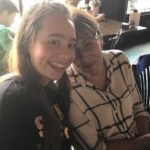 Sheila Whitehead works with Parent Involvement Coordinators across Waco ISD in her role as coordinator of federal programs for WISD. She has been an educator for 32 years and enjoys spending time with her family including her 11-year-old daughter Meghan.
Sheila Whitehead works with Parent Involvement Coordinators across Waco ISD in her role as coordinator of federal programs for WISD. She has been an educator for 32 years and enjoys spending time with her family including her 11-year-old daughter Meghan.
(Last year the Central Texas Artist Collective (CTAC) organized an exhibit downtown called EKPHRASIS. It was an exhibit of art and words. Local poets and artists were paired up to create art and poetry together that was then placed on exhibit in downtown Waco.
 This year the EKPHRASIS theme is An Exploration of Mind, Body, Soul. It takes a deeper look at mental health and illness, grief and loss, trauma, recovery, and healing. The hope for this mental health exhibition is to encourage dialogue stimulated by the 19 Artists and Writer’s ekphrastic displays, to destigmatize misconceptions, and to cultivate an empathic understanding of one another.
This year the EKPHRASIS theme is An Exploration of Mind, Body, Soul. It takes a deeper look at mental health and illness, grief and loss, trauma, recovery, and healing. The hope for this mental health exhibition is to encourage dialogue stimulated by the 19 Artists and Writer’s ekphrastic displays, to destigmatize misconceptions, and to cultivate an empathic understanding of one another.
In today’s blog post, our blogger, Gracie Arias shares her thoughts as a writer participating in EKPHRASIS. “Steve and Angie” she mentions are Steve and Angie Veracruz, two of the organizers of EKPHRASIS. – ALW)
By Gracie Arias
I met Steve and Angie through my husband, about 3 years ago. When they first approached us with the idea for Ekphrasis in 2016, my husband asked me to pair up with him and be the writer for his piece.
I used to write poetry in high school and even competed a couple of times, I reluctantly said “yes.” This has been so wonderful for us as a husband and wife. We were able to team up in a way we never have before and now we are doing our second Ekphrasis.
I’m so excited to see the community gather once again, especially with a topic such as this one. Mental illness runs rampant. It has no specifics of gender, race, age or religion and belief.
Since I was a small child I’ve dealt with these issues first hand. It was somewhat nerve racking to submit this poem. I write about my hurts and experiences first hand. No denying, no third person. ME! Many people close to me don’t even know some of those things about me. But I felt I had to be raw and honest, vulnerable. This was my chance to use my hurts and my depression, my being suicidal and feeling alone, as my platform.
If my message can help at least one person know they aren’t alone and that there is hope, then it’s worth it. I do put my beliefs into the mix because it’s who I am. I know not all share those beliefs and I’m respectful towards that, but I have to share it because it’s a part of my story. It has been the only thing that’s helped me make it through.
I am grateful for this opportunity and I believe people should make the effort to come support all the artist and writers. It’s hard putting yourself out there, but when there is a community willing to open their hearts and minds to these issues, it makes it so much better. What better experience than using your talent, your ability to bring a light to such a dark topic.
EKPHRASIS is a FREE walkable art exhibition. The works are on display in 14 storefront windows of Downtown Waco’s newly established Cultural Arts District, between 6th and 8th streets on Austin and Washington Avenues. The art and words will be on display starting First Friday, November 3. Saturday, November 4 from 5pm – 8:00pm, at the Austin’s on the Avenue Patio (719 Austin Ave.) there will be an Opening Event with poetry readings, performances, and mental health talks from organizations in our community.
 Gracie Arias is 27 years old. She is a stay at home mom and wife, who is still chasing dreams and supporting her husband through his dream chasing. She has been married for 9 years to her wonderful, supportive husband, Carlos Arias. They have three beautiful children, Serena(8), Anabella (5), and Jose (1). She says of her writing, “After writing poetry to help with some of the painful things I experienced as a child, I realized how much it truly helped me in my healing process.”
Gracie Arias is 27 years old. She is a stay at home mom and wife, who is still chasing dreams and supporting her husband through his dream chasing. She has been married for 9 years to her wonderful, supportive husband, Carlos Arias. They have three beautiful children, Serena(8), Anabella (5), and Jose (1). She says of her writing, “After writing poetry to help with some of the painful things I experienced as a child, I realized how much it truly helped me in my healing process.”
he Act Locally Waco blog publishes posts with a connection to these aspirations for Waco. If you are interested in writing for the Act Locally Waco Blog, please email ashleyt@actlocallywaco.org for more information.
By Melissa Mullins
So what do water, public health, a police station and your medicine chest have in common? They are all a part of National Prescription Drug Take-back Day.
There’s an epidemic in this country, and it’s killing people and ruining lives. According to the Centers for Disease Control (CDC) drug overdose deaths in the U.S. have never been higher, and the majority of those involve opioids, including prescription opioids. It’s estimated that nearly half the people who misuse prescription opioid medications obtain them from friends and family members, and that there is a nationwide reservoir of such drugs in our medicine cabinets. There are many facets to tackling this complex and critical issue, but you can play a part by ensuring proper disposal of all unused and expired medications in your medicine chest.
Additionally, about 60,000 young kids end up in emergency rooms in the US each year because they got into medicines when no one was looking. Common over the counter medicines like aspirin, multi-vitamins or other pain relievers and even personal care products like diaper ointment are often culprits. Keeping medicines up and away from kids is important but so is proper disposal of unused or unwanted medications, including over the counter (OTC) products.
And last but certainly not least, so called down the drain chemicals are part of what scientists, like Dr. Bryan Brooks at Baylor University, call “contaminants of emerging concern” (CEC’s). When we take medicines, or use products on our bodies, some of it ends up washing down the drain or being flushed down the toilet. Modern wastewater treatment plants, while true marvels that clean up a lot of nastiness from our water, are not designed to remove these CEC’s and may or may not (depending on the compound) do a good job of it. What happens when these compounds make their way back to the river? Researchers have shown that many common compounds can be detected in water and in fish tissue and can have a negative effects on organisms and ecosystems.
You may think you probably don’t have much- that’s what I thought too! A few years ago, I went through my cabinet and removed all expired medications (OTC and prescription) for drug takeback day. Here’s what I took to the police station:
OK OK you say- I am convinced to clean out the medicines in my cabinet! Can I just throw them in the trash or flush them down the toilet? Hopefully you now understand why flushing is a bad idea, but the landfill doesn’t want them either, which is why the City of Waco Solid Waste Services works to help divert them from the waste stream.
Anna Dunbar with the City of Waco shares this information from Spring 2017 regarding the amount of medications diverted from the waste stream during two events: “the DEA reported that Waco PD had about 1,000 pounds (April 29 Drug Take-back event) and the City of Waco collected about 200 pounds during Household Hazardous Waste Day. Baylor PD had about 80 pounds (a good haul for their first time). So, that is a lot of materials put into the right hands (the DEA) for safe disposal.”
The next National Prescription Drug Take-Back Day (includes over the counter medications) is coming this Saturday to a police station near you- see locations and times below: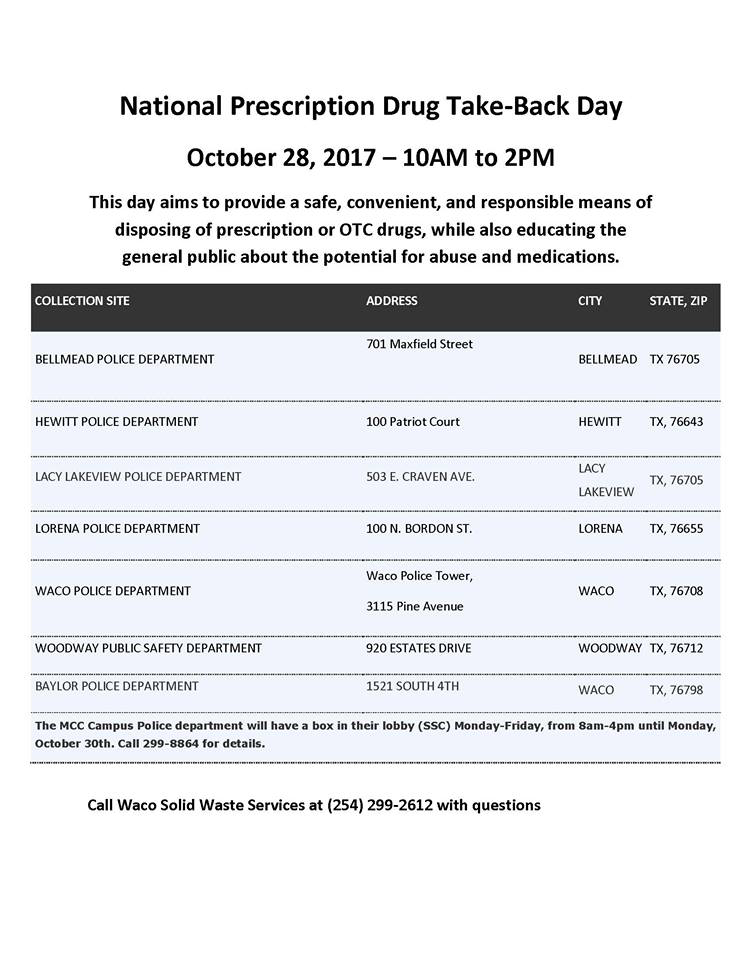
 Melissa Mullins coordinates education and outreach for the Center for Reservoir and Aquatic Systems Research at Baylor University where she enjoys engaging audiences of all ages around the important topic of water!
Melissa Mullins coordinates education and outreach for the Center for Reservoir and Aquatic Systems Research at Baylor University where she enjoys engaging audiences of all ages around the important topic of water!
The Act Locally Waco blog publishes posts with a connection to these aspirations for Waco. If you are interested in writing for the Act Locally Waco Blog, please email ashleyt@actlocallywaco.org for more information.
